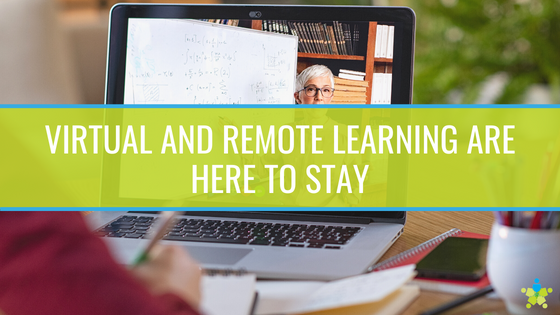[vc_row][vc_column][vc_column_text]Remote classes were already emerging before the pandemic hit, but since then, the trend toward virtual learning has greatly accelerated. Though there were some bumps along the way, it's clear that students, families, teachers, and schools can all benefit from distance learning opportunities.
AV manufacturers have caught up with this trend and now offer solutions that can help districts get more from their distance learning approach. It starts with technology that allows for instruction and collaboration, even when educators and students aren't in the same room.[/vc_column_text][/vc_column][/vc_row][vc_row][vc_column][vc_column_text]
Video Conferencing Makes Any Virtual and Remote Learning Program Possible
Video conferencing solutions are at the heart of any remote learning initiative. With video conferencing, your students aren't confined to classroom walls. Instead, they have access to a world full of thought leaders - like authors, artists, engineers, and athletes. At the minimum, your school will require video conferencing technology to drive a distance learning model. There are plenty of conferencing platforms to choose from, including both hardware and software-based systems. Whichever platform your educators prefer, modern AV solutions can be tailored to fit around it.[/vc_column_text][/vc_column][/vc_row][vc_row][vc_column][vc_column_text]How Video Conferencing Technology Can Support Education: A Few Ideas
Video conferencing expands your staff's capabilities, giving them additional tools and resources to help every student do their best. With video conferencing in place, school districts can do the following for their students:- Allow teachers to instruct in-class students and remote students simultaneously - At the outset of the pandemic, it was common for teachers to maintain hybrid classrooms, where in-class students and remote students would learn the same lesson at the same time. This was a challenge for educators at first, especially for teachers handling younger children. Hybrid classes still make sense, though, for students who cannot attend for health reasons. With video conferencing and remote learning solutions in place, students required to isolate and students experiencing long-term health concerns can still attend class.
- Help students access lessons and learning content outside of school hours - Survey after survey finds that people learn better when they're able to learn at their pace and on their schedule. With video conferencing technology, teachers can record lessons delivered to in-class students or lessons delivered directly to the camera. In both cases, these videos can be uploaded to a learning management system (LMS). Through the LMS platform, students and parents can access lesson videos on demand (VOD) and additional lesson resources at any time. For students who are ill or isolating, lesson VODs ensure no progress is lost. Even in classes where students are well, having VODs for reference offers students the flexibility to research and learn on their time.
- Help teachers access additional teaching resources - Teachers can also benefit from video conferencing technology, as it allows educators to connect and pull ideas from each other. Video conferencing also allows teachers to attend educator-focused webinars and train on current pedagogical practices.
- Allow students to take advanced, college-level courses - Video conferencing solutions also offer fast-moving students an opportunity to take college-level classes and pick up valuable university credits. Students that have the option to take college courses will be far more prepared for post-secondary learning - and this could boost the number of students graduating and entering university. Many colleges have programs in place for this very thing. Your school only needs a video conferencing solution in place for students to utilize.
A Couple of Solutions That Can Enhance the Virtual Learning Experience
In addition to video conferencing technology, there are a couple more AV solutions worth considering for distance learning purposes. They include:- Interactive flat panels - Interactive flat panels are an excellent complement to video conferencing systems. Interactive displays like the Clevertouch are designed for educational purposes, with lesson delivery and whiteboarding applications. With an interactive flat panel, the teacher can run the entire lesson from the display. They can open up a whiteboarding session, write notes and bring in any media through the display's built-in browser. If there is a second display for video conferencing from in the classroom, teachers can deliver lessons to both in-class and remote students while utilizing the interactive flat panel. When the lesson is over, the teacher can save what's on the whiteboard and share it with every student, including those who are connected remotely. That way, virtual students have the same access to any annotated material.
- Enhanced camera and microphone technology - The better the audio and video on your remote lessons, the more effective those lessons will be. Leading AV manufacturers pair their video conferencing solutions with quality cameras and microphones to enhance AV data input. For example, a face-tracking camera is especially helpful, as it ensures the teacher remains in view even if they walk around the room constantly during a lesson. The camera automatically detects where the teacher is and maintains framing on them. Many video conferencing solutions come with high quality MEMS microphones, but these can be upgraded for a microphone array for better audio pickup and zoning.



